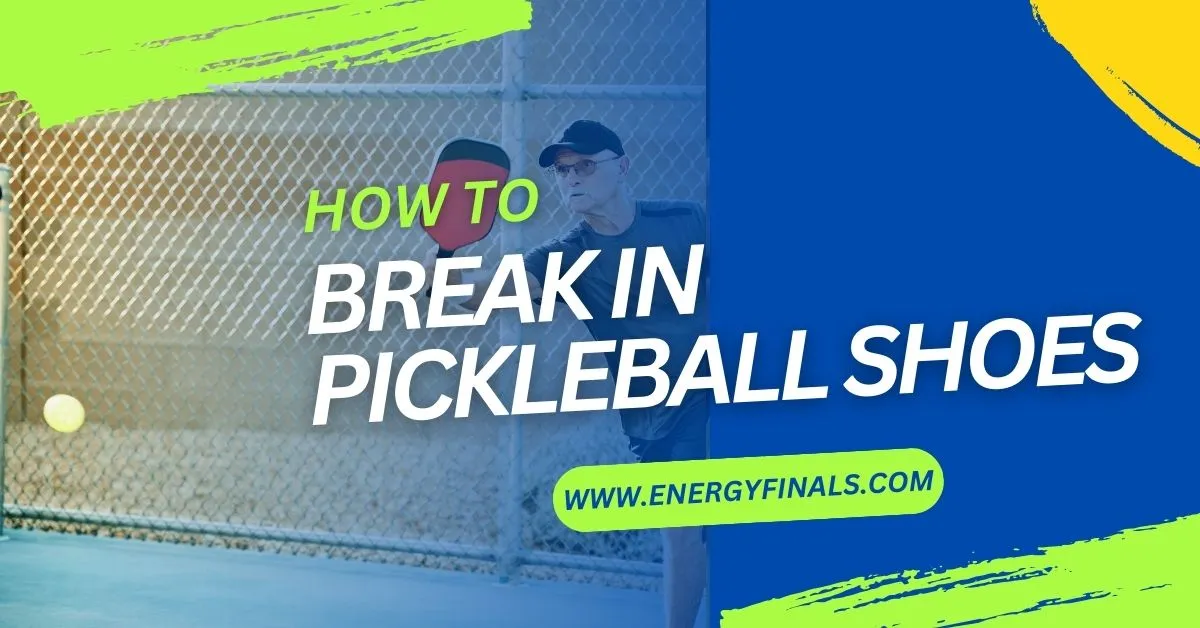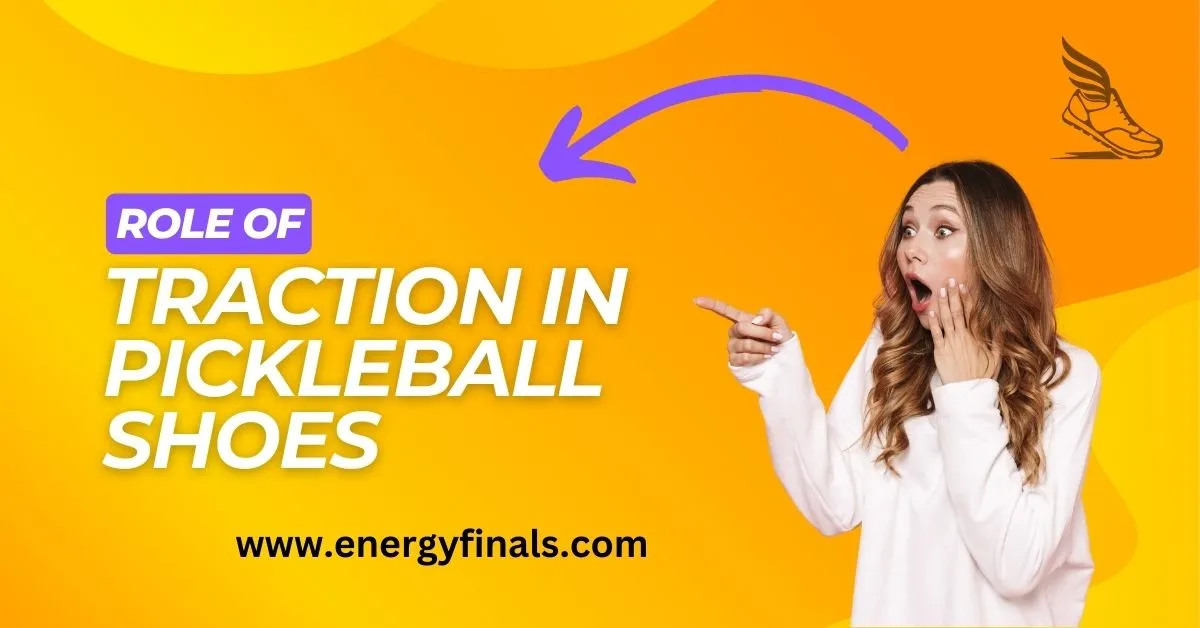Dealing with Foot Fatigue in Pickleball Shoes: Tips & Selection
Pickleball is a popular sport that takes a toll on your feet. It requires a lot of quick movements, side-to-side shuffles, and constant stop-and-go motions. All of these movements can put a lot of stress on your feet. As a result, playing pickleball for extended periods can cause foot fatigue and discomfort. When dealing with foot fatigue in pickleball shoes, the first line of defense is to choose pickleball shoes that last longer with cushioning and support.

But how do you choose the right pickleball shoes to prevent foot fatigue? In this blog post, we’ll provide you with tips and insights on selecting durable and supportive pickleball shoes. So, forget about those tired, aching feet, and let’s dive into the world of pickleball shoes.
Understanding Foot Fatigue in Pickleball
To understand how to alleviate foot fatigue, first understand what causes it. In pickleball, repetitive movements are one of the primary contributors to foot fatigue. The quick lateral changes and high-impact nature of this game can also take a toll on your feet. This is especially true if you’re playing on a hard surface such as concrete or asphalt.
Pickleball players may experience foot fatigue in different areas of their feet, such as the arches, heels, and toes. As a result, it’s essential to choose pickleball shoes that can provide support and cushioning in these specific areas.
The Impact of Foot Fatigue on Performance in Pickleball
Foot fatigue is not only uncomfortable but can also have a significant impact on your performance. The strain on your feet can lead to reduced agility, balance, and overall gameplay. It can also affect your ability to make quick movements and changes in direction. For consistent performance on the pickleball court, it’s crucial to mitigate foot fatigue. This means choosing the right shoes that can support and protect your feet from the high demands of the game.
How to Identify Foot Fatigue in Pickleball?
It’s essential to pay attention to your body and identify signs of foot fatigue. Some common symptoms include soreness, stiffness, and pain in the feet or lower legs. You may also experience burning sensations or cramping. Any of these symptoms during or after playing pickleball indicate that your feet are fatigued and in need of support and relief. It’s crucial to address foot fatigue promptly to prevent further discomfort or injury.
The Role of Pickleball Shoes in Alleviating Foot Fatigue
Pickleball shoes play a crucial role in preventing and alleviating foot fatigue. These specialized shoes are designed to provide support, cushioning, traction and stability for the feet during the game.
Support
Pickleball shoes offer support through features like reinforced toe caps, sturdy outsoles, and midfoot shanks. These elements help distribute weight evenly and reduce strain on the feet.
Cushioning
The constant impact on your feet during pickleball can be harsh, leading to fatigue and discomfort. Pickleball shoes offer cushioning in the heel and forefoot areas to reduce the impact on your feet. Materials like EVA foam and gel provide ample cushioning for maximum protection.
Stability
Quick movements and directional changes are common in pickleball. Pickleball shoes offer lateral stability features and proper ankle support to prevent slips and fall on the court.
Key Considerations for Choosing Pickleball Shoes
When choosing pickleball shoes, there are several key considerations to keep in mind. These factors will ensure that you select shoes that provide optimal support, comfort, and durability.
Optimal Traction and Grip
Good traction is essential for preventing slips and falls on the pickleball court. Without a proper grip, you risk losing your footing and potentially injuring yourself. When choosing pickleball shoes, look for outsole materials and patterns that offer superior traction.
Some common outsole materials in pickleball shoes include rubber, gum rubber, and synthetic compounds. These materials provide excellent grip on indoor courts. On the other hand, shoes designed for outdoor pickleball may have a more aggressive tread pattern and use materials like rubber or hardcourt rubber.
Another factor to consider is the pattern of the outsole. Herringbone patterns are commonly used as they provide excellent traction in all directions. Other popular patterns include hexagon and circular designs.
Proper Fit and Size
Finding shoes that fit well and provide adequate support is crucial for preventing foot fatigue. When trying on pickleball shoes, take the time to measure your foot size accurately. Consider both width and length when selecting a shoe size. It’s also essential to allow enough room for toe movement in your shoes. This will prevent discomfort and blisters during long games or matches.
Cushioning and Shock Absorption
Pickleball involves a lot of quick movements, which can have a lot of impact on your feet. That’s why it’s crucial to choose shoes with ample cushioning and shock absorption. Midsole materials like EVA foam and gel are commonly used for this purpose. When selecting pickleball shoes, look for shoes with extra cushioning in the heel and forefoot areas. This will help reduce the impact on your feet and prevent foot fatigue.
Stability and Support
To perform well in pickleball, you need shoes that offer stability and support during quick directional changes. Look for shoes with a midfoot shank or TPU (thermoplastic urethane) plate. This provides stability and prevents the shoe from bending too much during lateral movements.
Some shoes also come with proper ankle support and lateral stability features. These can be beneficial for preventing injuries and enhancing your performance on the court. For added support, consider getting shoes with a higher ankle collar or additional straps.
Breathability and Moisture Management
Playing pickleball can make your feet hot and sweaty. Shoes with breathable materials and moisture-wicking properties can help keep your feet dry and comfortable. This is especially important for longer games or matches. Mesh uppers are a common choice for breathability while moisture-wicking liners help absorb sweat. Additionally, some shoes have ventilation holes or panels to improve airflow and prevent excessive sweating.
Durability and Longevity
Durability is a crucial factor when it comes to pickleball shoes. The game involves a lot of movements, so you need shoes that can withstand the demands of the sport. Look for shoes with robust construction, reinforced areas, and high-quality materials. A quality pair will not deshape easily and will last longer.
Specific shoe brands or models known for their durability in pickleball include Nike, Adidas, Asics, and New Balance. Do some research and read reviews to find out which shoes have a reputation for lasting through intense pickleball games.
Maintaining and Extending Pickleball Shoe Lifespan
Taking care of your pickleball shoes can help extend their lifespan, keeping them in good condition for longer. Here are some tips to help you maintain and preserve your shoes:
Proper Cleaning and Storage
After playing pickleball, clean off any dirt or debris from your shoes. Use a damp cloth or brush with mild soap and water to wipe away any stains or dirt. Avoid using harsh cleaners as they can damage the materials and cause discoloration.
Once clean, allow your shoes to air dry in a well-ventilated area. Avoid placing them near direct heat sources as it can cause shrinkage or warping of the materials. Store your pickleball shoes in a cool, dry place away from direct sunlight. This will prevent any damage to the materials and keep them in good condition.
Rotating Shoes
Rotating between multiple pairs of shoes can also help extend their lifespan. By switching between shoes, you give each pair time to rest and recover, preventing excessive wear and tear. It also allows the materials to regain their shape and cushioning, ensuring your shoes provide optimal support during games. For players who play pickleball frequently, having multiple pairs of shoes to rotate between can be beneficial.
Avoiding Excessive Wear and Tear
Use your pickleball shoes only for playing the game. Using them for other activities like running or walking can cause unnecessary wear and tear, reducing their lifespan. Additionally, avoid playing on abrasive surfaces like concrete or asphalt, as it can damage the soles and decrease traction. Knowing when to replace worn-out shoes is also crucial. A good rule of thumb is to replace your pickleball shoes every 6 months or 300-500 hours of play, whichever comes first.
Replacing Worn out Shoes
Even with proper care and maintenance, all shoes eventually wear out. Signs that it’s time to replace your pickleball shoes include visible wear and tear on the outsole, decreased traction, and reduced cushioning and support. When replacing your shoes, consider investing in a similar or upgraded model from the same brand. This ensures familiarity with the fit and feel of the shoes while also providing potential improvements in performance.

FAQs
What is the most common foot injury in pickleball?
The most common foot injury in pickleball is plantar fasciitis, which is inflammation of the tissue that connects the heel bone to the toes. Repetitive movements can cause this injury, making proper footwear essential for preventing it.
Is pickleball hard on the feet?
Pickleball can be hard on your feet, especially if you are not wearing the right shoes. With the quick lateral movements and stops involved in the game, proper support and cushioning are crucial to prevent foot fatigue, pain, and injury.
Is it bad to play pickleball everyday?
Playing pickleball every day can be a great form of exercise and enjoyment. However, listen to your body and make sure to take rest days as needed. Overuse injuries can occur if you are not giving your feet and body enough time to recover.
Why do my feet hurt so much after playing pickleball?
If your feet are hurting after playing pickleball, it could be due to inadequate footwear. Wearing shoes that are too tight or not designed for the sport can cause discomfort and pain. It could also be a sign that your shoes need to be replaced.
Should pickleball shoes be tight or loose?
Pickleball shoes should have a snug fit without being too tight. This ensures proper support and stability while also allowing room for movement and comfort. If your shoes are too loose, you risk slipping and injuring your feet during gameplay. A right fit is crucial for maximizing performance and preventing foot injuries.
Conclusion
Foot fatigue is a common issue that many pickleball players face. While it may seem like a minor inconvenience, it can greatly impact your game and overall enjoyment of the sport. That’s why choosing the right pickleball shoes is crucial to help alleviate foot fatigue.
With this guide, you now know how to make an informed decision when selecting your next pair of pickleball shoes. Remember to consider the key elements such as cushioning, support, and durability. Additionally, always try on multiple pairs and move around in them to ensure a proper fit before making your purchase.
Don’t forget that taking care of your feet extends beyond just choosing the right shoes. Proper warm-up and stretching routines can also help prevent foot fatigue during pickleball games. If you do experience foot pain or discomfort, be sure to address it promptly and seek professional medical advice if needed.


